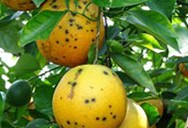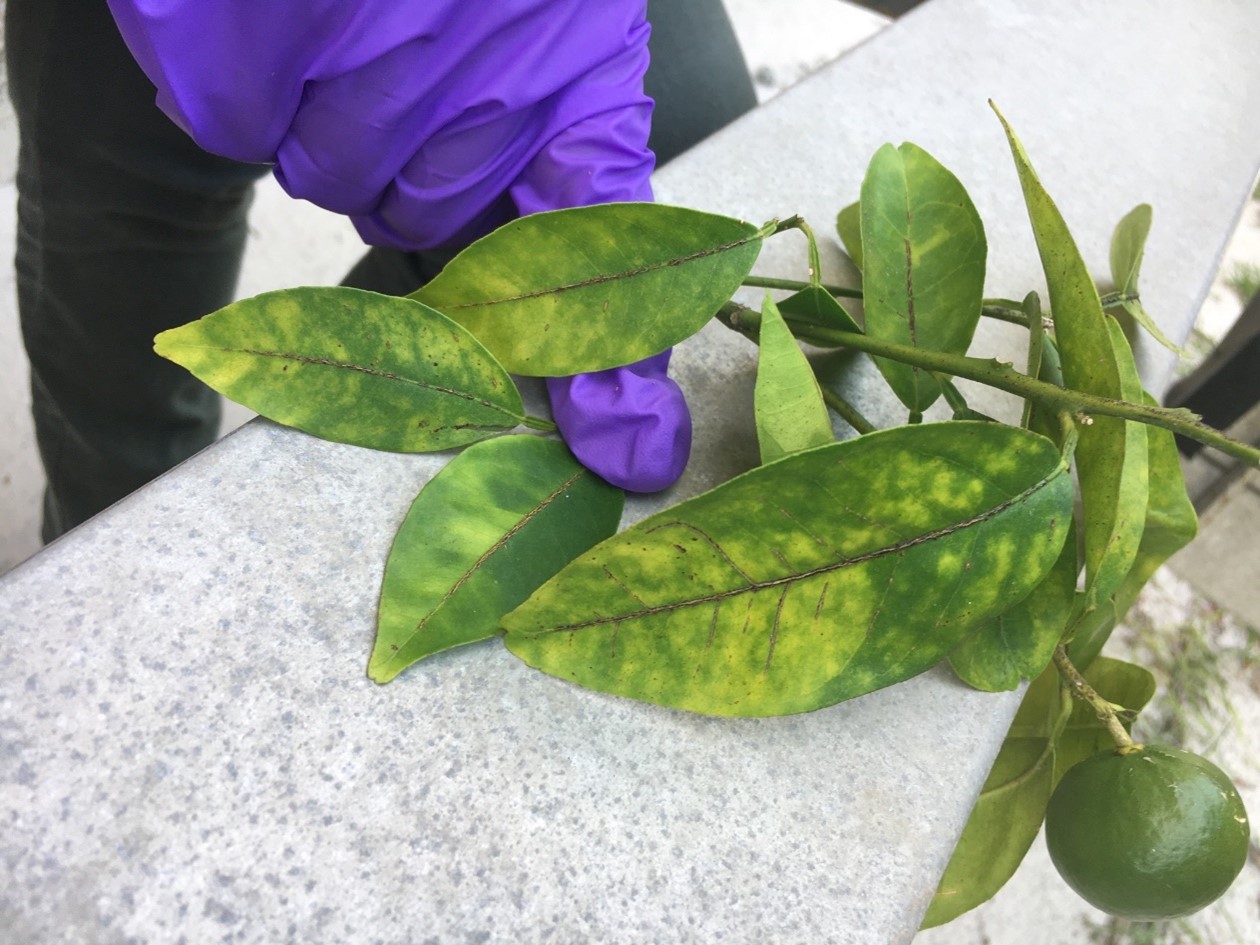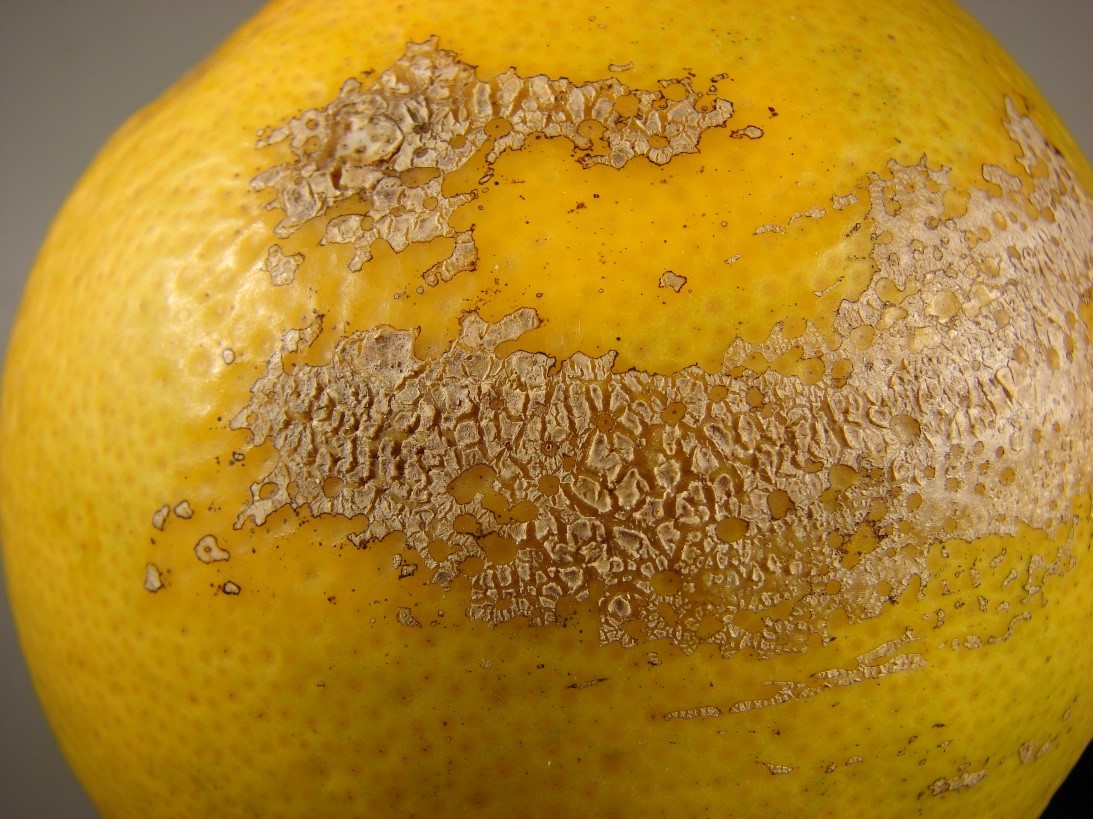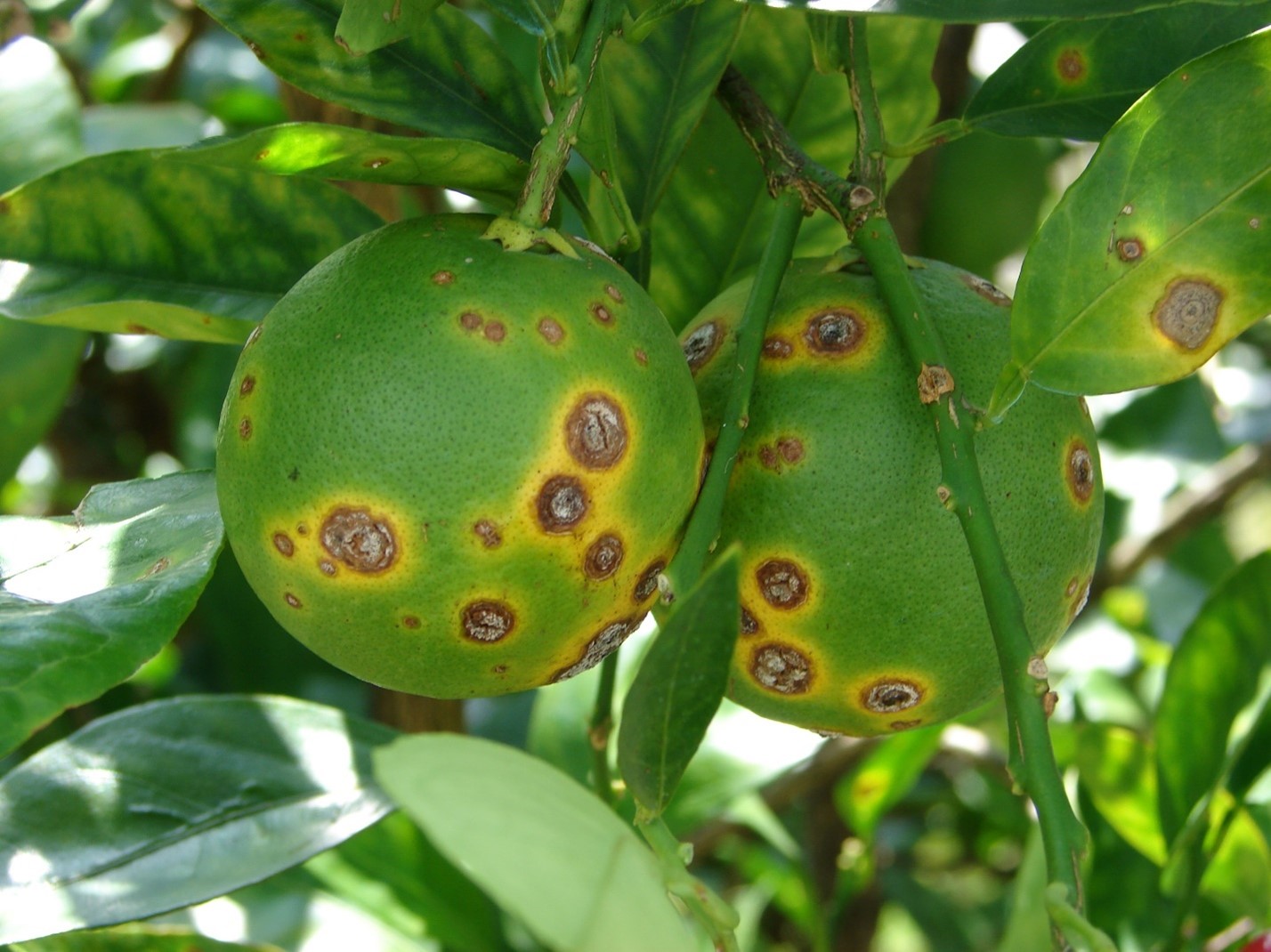Asian Citrus Psyllid (diaphorina citri)
The Asian citrus psyllid (ACP) is a tiny insect, about the size of a gnat, that feeds on the sap of citrus and related species. ACP reproduce on newly developing leaves, and while the insect itself causes little direct feeding damage, the insect can carry the bacteria that causes citrus greening disease (Candidatus Liberibacter asiaticus), or “Huanglongbing,” which means “yellow dragon disease.” Psyllids can transmit citrus greening to uninfected citrus trees as they feed. Citrus greening is now present in all citrus growing regions of the United States.

Citrus Greening
Citrus greening (also known as Huanglongbing) is the most serious citrus disease in the world and is caused by the bacterium Candidatus Liberibacter asiaticus. There is no cure for this disease once a tree is infected. While the disease poses no threat to humans or animals, it has devastated millions of acres of citrus production around the world, including in the United States.
Citrus greening has been known in Asia since 1900, and Africa since 1920. The first detection of this diease in the Americans was in Brazil in 2004. The first detection in the United States was in Florida in 2005. Citrus greening has been detected in all the major citrus growing states in the United States, except Arizona.
Once a tree is infected with the bacteria, the tree can remain without detectable symptoms for months or years. Citrus greening damages the tree’s vascular system and causes the tree to starve for nutrients. During this symptomless phase, the tree can serve as a source of bacteria to infect other trees. Over time, an infected tree will start producing fewer fruit that are smaller, shaped irregulary, and taste bitter. Trees with citrus greening have stunted growth, root die-back, and leaves with blothy mottling. Infected trees are prone to dropping fruit before it is ripe. Trees infected with citrus greening will eventually succumb to the disease and die.
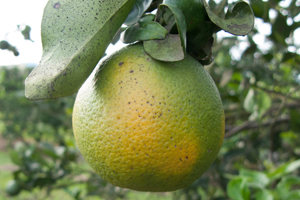
Sweet Orange Scab
Sweet orange scab (SOS) is a disease caused by the fungus Elsinöe australis, which results in scab-like lesions primarily on fruit and less frequently on leaves and twigs. The fruit are safe to eat, but the blemishes result in reduced marketability in the fresh fruit market. The initial symptoms of sweet orange scab form on very young fruit as lesions that are slightly raised and pink to light brown. As the lesion expands, it becomes cracked or warty. The lesion color changes to yellowish brown and eventually to dark gray. Sweet orange scab can cause premature fruit drop and stunt young nursery trees and new field plantings but has little impact on fruit quality.
SOS was first detected in the United States in 2010 in Texas. SOS is now confirmed in Louisiana, Florida, Mississippi, Texas, Arizona, and parts of California and Alabama.
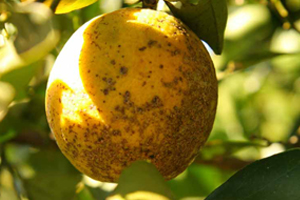
Citrus Canker
Citrus canker is a disease caused by the bacterium, Xanthomonas citri. While not harmful to humans, canker significantly affects the vitality of citrus trees, causing leaves and fruit to drop prematurely. Infection causes lesions on the leaves, stems, and fruit of citrus trees. Typical lesions of the disease are raised, tan to brown in color, and have a water-soaked margin and yellow halos. The bacteria propagate in the lesions, which ooze bacterial cells that are dispersed by windblown rain, contaminated equipment, and movement of infected plants. Symptoms generally appear within 14 days of exposure to the canker bacteria. The bacteria remain viable in lesions and on plant surfaces for several months.
A fruit infected with canker is safe to eat, but its appearance can decrease its marketability.
Canker originated in southeast Asia. Citrus canker was first detected in the United States in 1910 and was eradicated in 1933. It was discovered again in 1995 in Miami-Dade County, Florida. Despite an aggressive tree removal program, USDA was not able to eliminate canker in Florida a second time and ended eradication efforts in 2006. Canker is present in Florida, Louisiana, and parts of Texas and Alabama.

Citrus Black Spot
Citrus black spot (CBS), which is caused by the fungal pathogen Phyllosticta citricarpa. CBS was first found in south Florida, near Immokalee, in March 2010. The disease has not been detected in Alabama. CBS symptoms on fruit include hard spot, cracked spot, false melanose, freckle spot or early virulent spot, and virulent spot. Symptoms of CBS are easiest to observe during color break, when fruit turns from green to ripe coloration. When trees are severely infected, CBS can cause premature fruit drop before harvest, resulting in significant yield loss.
CBS is spread when wind-borne spores embed in the leaf litter under trees and are carried long distances by air currents. Rain splash may move spores short distances from infected fruit and/or leaf litter. Human-assisted movement of fruit and infected nursery stock is the main manner of long distance movement.
